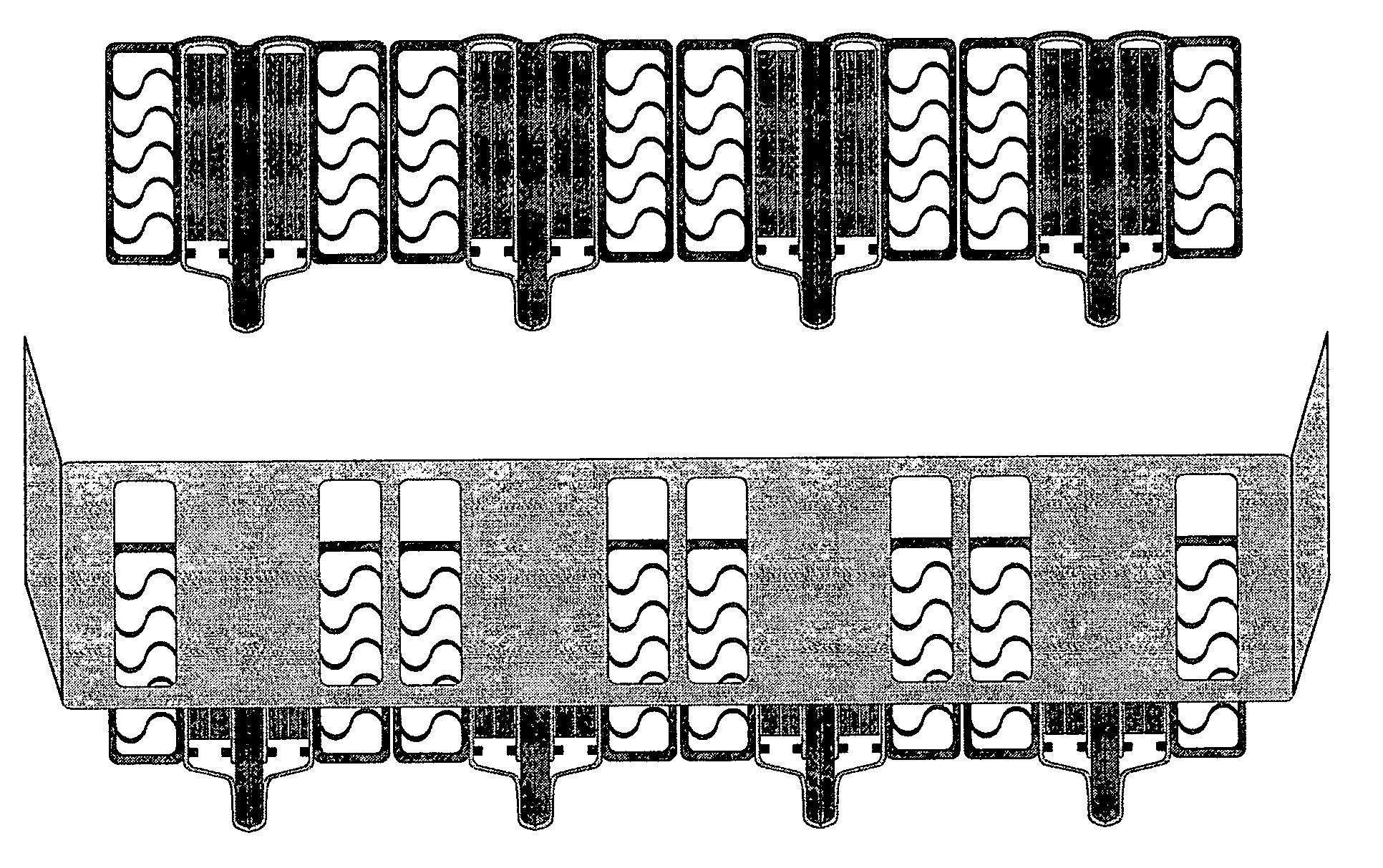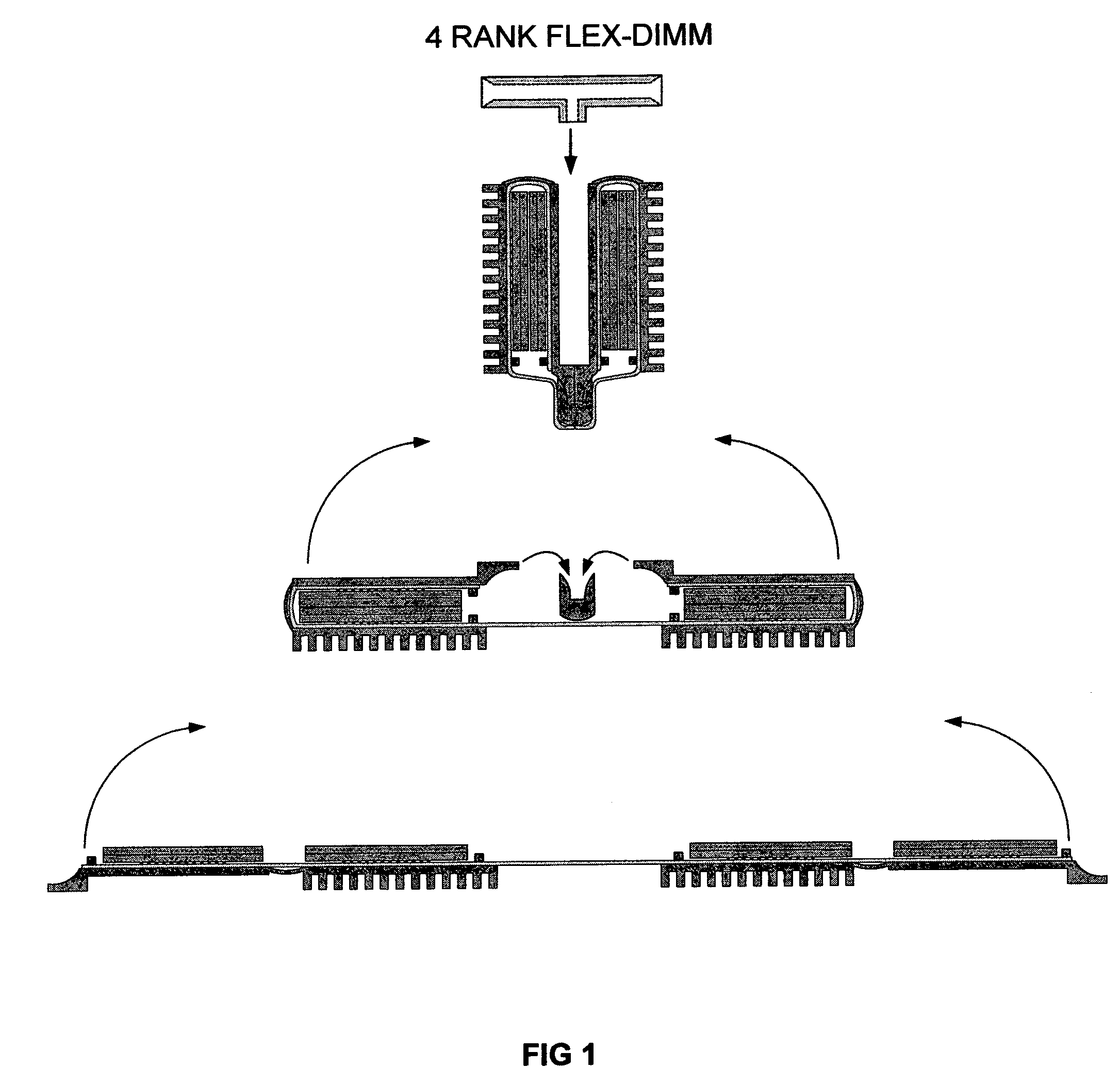Thermal management system for computers
a technology of management system and computer, applied in the direction of electrical apparatus construction details, electrical apparatus casing/cabinet/drawer, instruments, etc., can solve the problems of soft failure, memory module density, affecting the functionality of high-performance computing systems, etc., and achieve the effect of more efficient use of spa
- Summary
- Abstract
- Description
- Claims
- Application Information
AI Technical Summary
Problems solved by technology
Method used
Image
Examples
example 1.2
RANK FLEX DIMM
[0031]The single sided cooling Flex DIMM module consists of semiconductor components mounted to and interconnected by a multilayer flex circuit that is integrally (and thermally) coupled to the base side of a single sided heat sink. This configuration is mirrored about the center plane of the module completing the assembly. The removal of heat from the semiconductor devices is accomplished by conducting heat away from the component, through the flex circuit, and directly into the cooling air stream by the means of a single sided high performance forced convection heat sink. This heat sink utilizes a forced air convection heat transfer process to transport the heat from the heat sink base out to the dissipating surfaces and then into the cooling air stream. The forced convection cooling air stream impinges onto one end of the Flex DIMM module heat sink, and flows along the length of the heat sink dissipating surface. The high performance forced convection heat sink acco...
example 2.4
RANK FLEX DIMM
[0032]The double sided cooling Flex DIMM module consists of semiconductor components mounted to and interconnected by a multilayer flex circuit that is integrally coupled to both sides of a double sided cold plate heat exchanger. This configuration is mirrored about the center plane of the module completing the assembly. The removal of heat from the semiconductor devices is accomplished by conducting heat away from the component, through the flex circuit, and directly into the cooling air stream by the means of a double sided, high performance, forced convection, cold plate heat exchanger. This heat exchanger utilizes a forced air convection heat transfer process to transport the heat from the heat exchanger sidewalls, to the dissipating surfaces, and into the cooling air stream. The forced convection cooling air stream impinges onto one end of the Flex DIMM module heat exchanger, and flows through the length of the enclosed heat exchanger sidewalls, across the heat ex...
PUM
 Login to View More
Login to View More Abstract
Description
Claims
Application Information
 Login to View More
Login to View More - R&D
- Intellectual Property
- Life Sciences
- Materials
- Tech Scout
- Unparalleled Data Quality
- Higher Quality Content
- 60% Fewer Hallucinations
Browse by: Latest US Patents, China's latest patents, Technical Efficacy Thesaurus, Application Domain, Technology Topic, Popular Technical Reports.
© 2025 PatSnap. All rights reserved.Legal|Privacy policy|Modern Slavery Act Transparency Statement|Sitemap|About US| Contact US: help@patsnap.com



